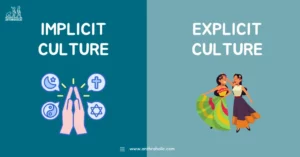AI Answer Evaluation Platform Live Now. Try Free Answer Evaluation Now
Relationship between Anthropology and Earth Sciences
The relationship between anthropology and earth sciences is a topic that has been gaining more attention in recent years, as both fields have begun to recognize the importance of understanding human-environmental interactions. Anthropology is the study of human cultures, societies, and behaviors, while earth sciences encompass the study of the physical and chemical processes that shape the Earth. At first glance, these two fields may seem unrelated, but they actually have a significant overlap, and a better understanding of this relationship can provide valuable insights into how we can better manage our natural resources.

Similarities between Anthropology and Earth Sciences
One of the key areas where anthropology and earth sciences intersect is in the study of human impacts on the environment. Earth scientists study how humans have altered the landscape through processes such as deforestation, soil erosion, and climate change. Anthropologists, on the other hand, examine how human societies interact with their environment, including how they use natural resources, how they manage land and water, and how they adapt to changing environmental conditions. By combining these perspectives, we can gain a more complete understanding of how human activities have affected the Earth’s ecosystems and how we can mitigate these impacts.
Another important area where anthropology and earth sciences intersect is in the study of human evolution. Anthropologists have long been interested in understanding the evolution of humans and their relationships with other primates. Earth scientists can provide valuable insights into the environmental conditions that shaped early human societies, including changes in climate and landscape. For example, by studying the geology and paleontology of a particular area, scientists can determine what the climate was like during a certain time period, and how this may have affected the evolution of human societies.
In recent years, there has also been growing interest in the study of traditional ecological knowledge (TEK), which is the knowledge and practices of indigenous peoples related to the environment. This knowledge is often based on centuries of observation and experimentation, and can provide valuable insights into how to manage natural resources sustainably. Earth scientists can work with anthropologists to study these traditional knowledge systems and use them to develop more effective conservation strategies.
Finally, there is also significant overlap between anthropology and earth sciences in the study of cultural heritage. Archaeologists and cultural anthropologists study the material culture of past societies, including their buildings, tools, and art. Earth scientists can help to reconstruct the environmental conditions that existed during these periods, which can provide insights into how these societies adapted to their surroundings. For example, by studying the sedimentary layers in an archaeological site, scientists can determine what the climate was like during the time period when the artifacts were created.
Conclusion
In conclusion, the relationship between anthropology and earth sciences is an important and multifaceted one, with many areas of overlap and potential for collaboration. By combining these two perspectives, we can gain a more complete understanding of how humans have interacted with the environment throughout history, and how we can better manage our natural resources for the future. This interdisciplinary approach has the potential to make significant contributions to fields such as conservation biology, climate change research, and sustainable development, and highlights the importance of recognizing the interconnectedness of all aspects of our world.
Suggested Reading
- Read about Earth Sciences here
- Relationship between Anthropology and Humanities
- Relationship between Anthropology and Sociology
- Relationship between Anthropology and Behavioural Sciences
- Relationship between Anthropology and Earth Sciences
- Relationship between Anthropology and Medical Sciences
- Relationship between Anthropology and Life Sciences
- Relationship between Anthropology and Social Sciences



